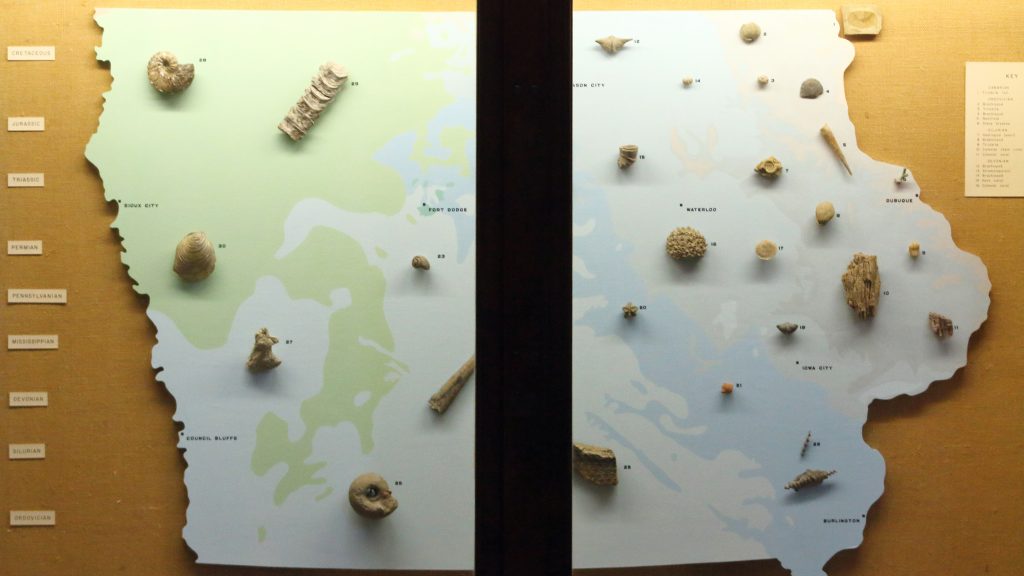Iowa does have a state bird (Eastern Goldfinch) and a state flower (wild rose), but it is one of seven states not to have a state fossil, despite the state’s rich fossil history.
The University of Iowa Department of Earth and Environmental Sciences is advocating for the crinoid to become that state fossil.
As of now, the states that have not designated a state fossil are Arkansas, Hawaii, Indiana, Iowa, Minnesota, New Hampshire, and Rhode Island.
A crinoid can be best described as a starfish on a stalk, said Tiffany Adrain, the collections manager for the department.
However, instead of having five arms like a typical starfish, crinoids are encased in a ball at the top of the stalk. The crinoid has its mouth and waste disposal system on its top.
Because they are marine animals and look like flowers, they are popularly called sea lilies, Adrain said. They have been around for approximately 400 million years.
“We have an incredibly long history of fossil research and discovery in [Iowa],” she said. “[Iowa’s fossil discovery] dates so long that one of the people that were on the Lewis and Clark trip actually collected fossils from Iowa.”
Having a state fossil can help people get in touch with the natural wealth the state has to offer, Adrain said. Children can learn about the rich history of fossils. Most importantly, it helps boost the identity of the state and is something that the state can be associated with.
Children should get to learn about the state fossil just as they learn about the state animal, bird, or rock, she said.
Burlington is internationally known for its fossils, Adrain said, and is where most crinoid fossils come from. Exhibits of fossils from Iowa are in museums all over the world.
The collection at UI was started around 160 years ago. Crinoids were the earliest specimens to be published. The crinoid collection is known internationally because it has been the basis of research since 1878.
“One of the things about Iowa is that if you stripped out all the soil, the entire state is made of rocks that [were] deposited on the floor,” Professor Jonathan Adrain said.
“North America has been under water for most of geological time, so Iowa is made of rock that is millions of years old,” Jonathan Adrain said. “So, it’s important [to have a state fossil] for this state than any other, for letting people know that this is basically what we live on.”
Crinoid fossils in Iowa are wonderfully preserved, Adjunct Assistant Professor Raymond Anderson said. They are one the earliest animals to live on Earth.
Making crinoids Iowa’s state fossil would help educate children about the history of fossils of the state, he said.
There was a bill prepared to make crinoids Iowa’s state fossils in 2005, Jonathan Adrain said.
“The Legislature does have other important things to do; however, [this] isn’t a decision that is going to take much time,” he said.



